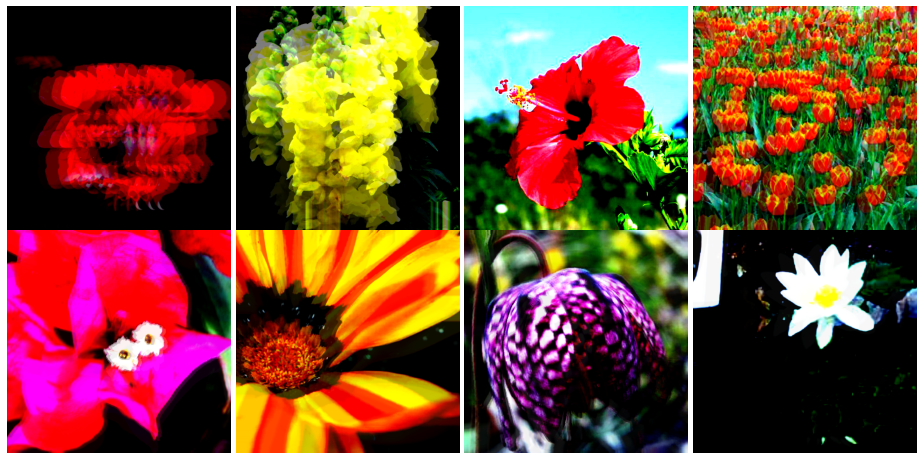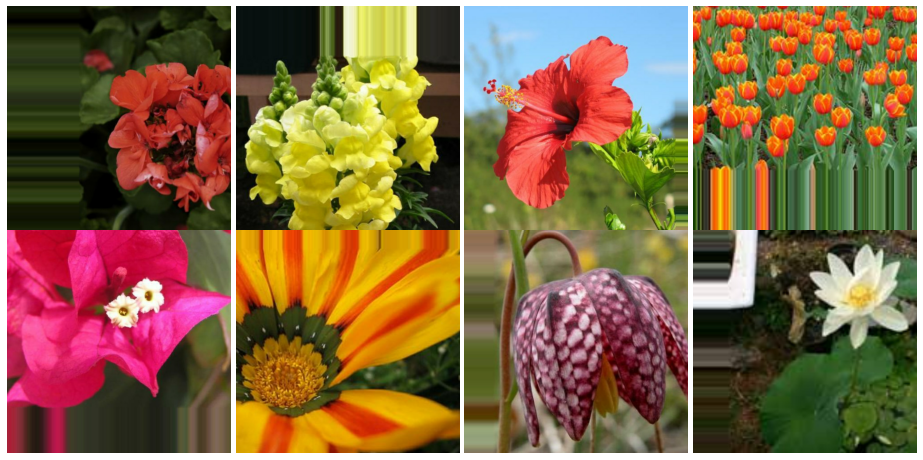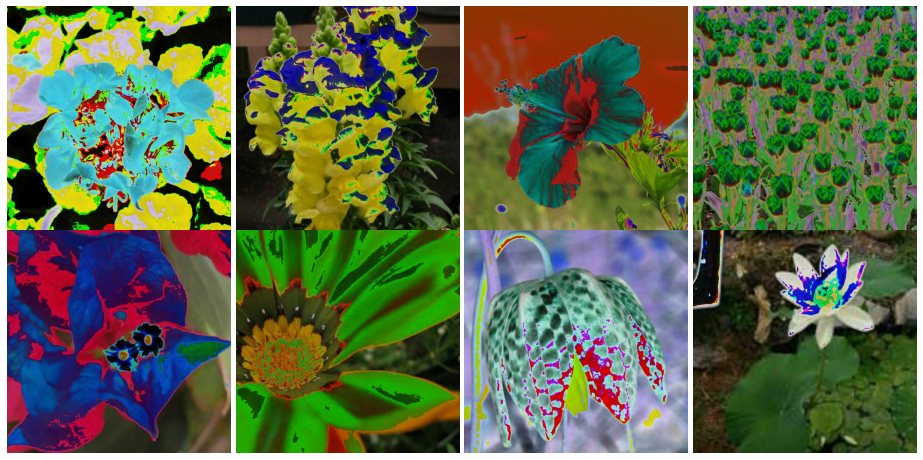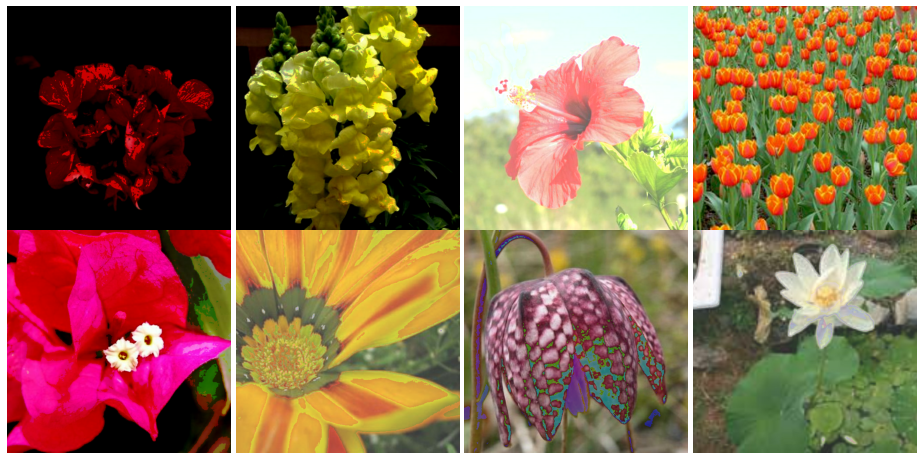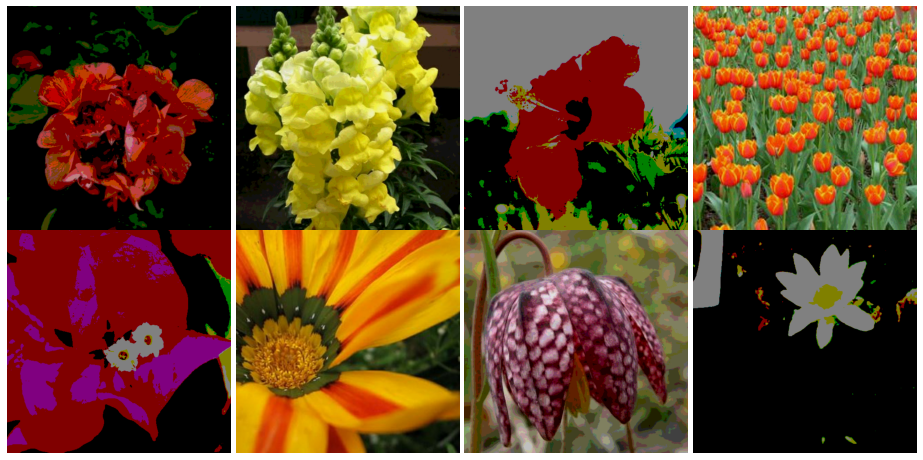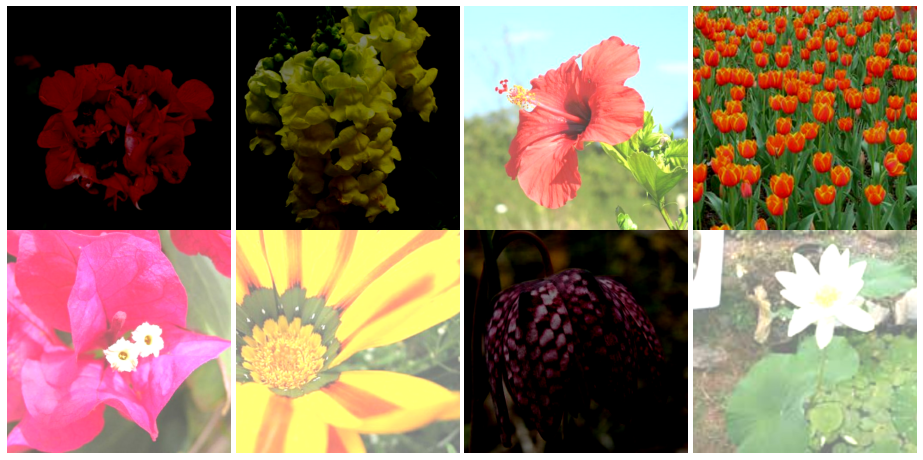NOTE: this implementation is no longer supported, you can use keras-team/keras-cv#407 as a replacement (it's based on this repo).
Augmix-tf is an implementation of novel data augmentation AugMix (2020) in TensorFlow. It runs on TPU.
AugMix utilizes simple augmentation operations which are stochastically sampled and layered to produce a high diversity of augmented images. The process of mixing basic tranformations into augmented image is shown below (picture taken from the original paper). This augmentation performs better when used in concert with Jensen-Shannon Divergence Consistency Loss.
pip install augmix-tf
The main function, which does the augmentation is AugMix.transform, let's print a docstring of it.
from augmix import AugMix
print(AugMix.transform.__doc__) Performs AugMix data augmentation on given image.
Parameters:
image (tf tensor): an image tensor with shape (x, x, 3) and values scaled to range [0, 1]
severity (int): level of a strength of transformations (integer from 1 to 10)
width (int): number of different chains of transformations to be mixed
depth (int): number of transformations in one chain, -1 means random from 1 to 3
Returns:
tensor: augmented image
Example 1 - transforming a single image
from PIL import Image
import numpy as np
import tensorflow as tf
import matplotlib.pyplot as plt
from augmix import AugMix
# precalculated means and stds of the dataset (in RGB order)
means = [0.44892993872313053, 0.4148519066242368, 0.301880284715257]
stds = [0.24393544875614917, 0.2108791383467354, 0.220427056859487]
ag = AugMix(means, stds)
# preprocess
image = np.asarray(Image.open('geranium.jpg'))
image = tf.convert_to_tensor(image)
image = tf.cast(image, dtype=tf.float32)
image = tf.image.resize(image, (331, 331)) # resize to square
image /= 255 # scale to [0, 1]
# augment
augmented = ag.transform(image)
# visualize
comparison = tf.concat([image, augmented], axis=1)
plt.imshow(comparison.numpy())
plt.title("Original image (left) and augmented image (right).")
plt.show()Example 2 - transforming a dataset of images
# here a dataset is a tf.data.Dataset object
# assuming images are properly preprocessed (see example 1)
dataset = dataset.map(lambda img: ag.transform(img))Example 3 - transforming a dataset to use with the Jensen-Shannon loss
# here a dataset is a tf.data.Dataset object
# assuming images are properly preprocessed (see example 1)
dataset = dataset.map(lambda img: (img, ag.transform(img), ag.transform(img)))AugMix mixes images transformed by simple augmentations defined in transformations.py file. Every transformation function takes an image and level parameter that determines a strength of this transformation. This level parameter has the same value as severity parameter in AugMix.transform function, so again it is the integer between 1 and 10, where 10 means the strongest augmentation. These functions can be used by itself. Below is a visualization what every simple augmentation does to a batch of images (at level 10).
- batch implementation of AugMix
- possibility to choose basic transformations easily
- appendix
- calculation of mean and standard devation on a dataset
- implementation of Jensen-Shannon Divergence Consistency Loss
MIT



